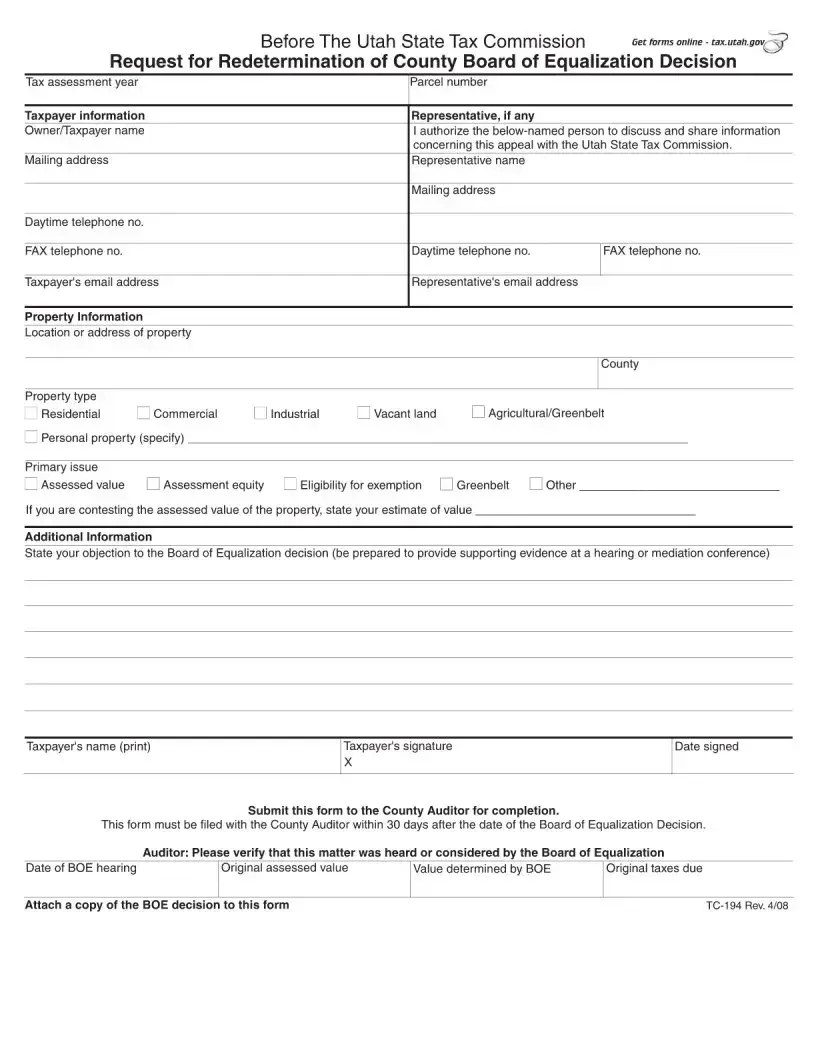The TC-194 form in Utah, primarily utilized for requesting motor vehicle and vessel record searches, bears similarity to the MV-50 Form found in New York. The MV-50 Form, also known as the Retail Certificate of Sale, is primarily designed for automotive dealers to document vehicle sales. Both forms involve the automotive industry but serve different administrative purposes: the TC-194 for record searches and the MV-50 for sales transactions. Each form is critical within its jurisdiction for legal and logistical handling of motor vehicles, hinting at the breadth of paperwork required in the vehicle life cycle.
Another document comparable to the TC-194 is the Vehicle Registration Application (Form REG 343) used in California. This form is integral to the process of registering a new or used vehicle in California. Just like the TC-194, the REG 343 involves the collection and verification of vehicle information, although for different ends — the former for record searching and the latter for registration. Both forms play a pivotal role in ensuring vehicles are properly documented and tracked within their respective state systems.
The Driver's Privacy Protection Act (DPPA) Request Form, used in multiple states, is yet another document with similarities to the TC-194 form. The DPPA Request Form is designed to safeguard personal information in motor vehicle records. While the TC-194 is not specifically a privacy protection form, both it and the DPPA Request Form regulate the access to and use of vehicle-related information, demonstrating the balance between public administrative needs and individual privacy rights.
Comparable to the TC-194 form in its information-gathering intent, the Vehicle Information Request Form (VIRF) in Texas serves a similar purpose. The VIRF is utilized to request detailed records of a specific vehicle, focusing on its history, registration, and any pertinent data for legal, personal, or business reasons. Both the VIRF and the TC-194 necessitate specific details about the vehicle in question for processing, showcasing how states have distinct yet analogous processes for obtaining vehicle information.
Lastly, the Application for Duplicate Title (Form VTR-34) in Texas also shares commonalities with Utah’s TC-194. The VTR-34 is employed when a vehicle owner needs to request a duplicate title, often due to the original being lost, stolen, or damaged. While used for different purposes, both the TC-194 and the VTR-34 form require detailed information concerning the vehicle and its owner. This similarity underscores the emphasis on meticulous record-keeping and verification in vehicle administration across state lines.
